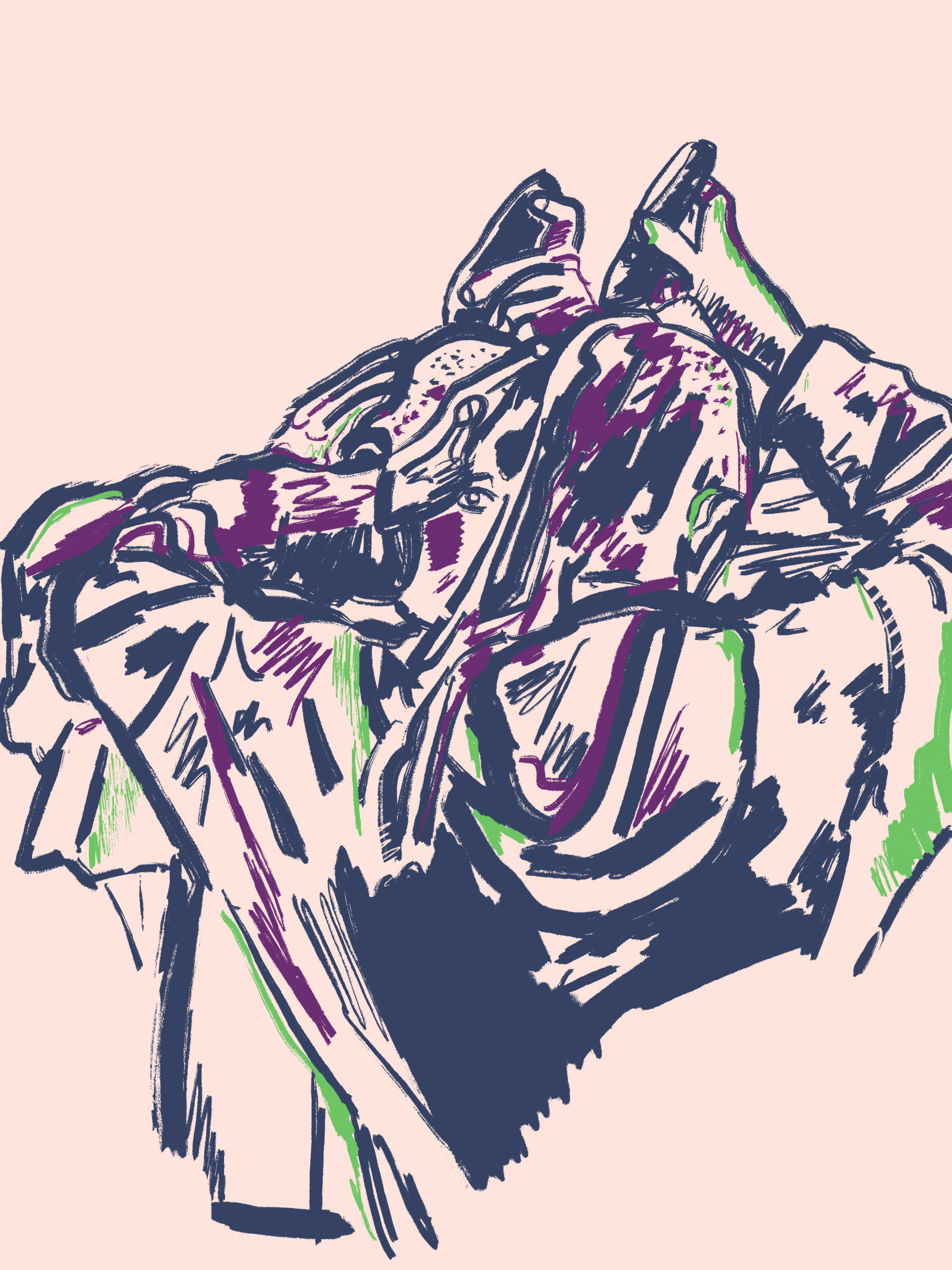Words: Hannah Parkinson (she/her)
Artwork: Lizzie Eidson (she/her)
This article features in our third print issue of the year, Ashes to Ashes.
Female “hysteria” has cropped up in medical journals dating back to 2000 BC – medical professionals perpetuating the belief that women were ‘biologically weak and flawed’ for this ‘hysterical behaviour’. As women, we are so often branded “hysterical”: ‘It’s just their time of the month’, says the age-old dismissal of our emotions.
Jumping forward 4 millenia, women are still demonised for their emotions. It is far too easy to romanticise misery. ‘Britney shaved her head and all we did was call her crazy’, sings MARINA in her 2021 album, referencing Britney Spears’ meltdown which will live in the archives of tabloids forevermore. Similarly came the public breakdown of former child star Lindsey Lohan during the noughties, who was criticised as her mugshot was plastered across the front page of practically every media outlet around the world.
Both Britney and Lindsey suffered following their very public struggles. There is a tendency for tabloids to swoop like vultures once a celebrity exhibits behaviour that can be exploited, mocked and picked apart. Sadly, it seems to be female celebrities who suffer disproportionately. Very recently, paparazzi shots of Cara Delevigne after Burning Man surfaced, and tabloids jumped upon them. Isn’t it time to stop demonising celebrities for their mistakes, addictions, and mental health issues? There is a stigma surrounding the very public nature of the celebrity breakdown, and a tendency to treat their lives and suffering as public domain.
But in light of the recent fascination with Y2K fashion and culture, these representations of female breakdowns are frequently passed off as “iconic” pop-culture moments. The influence of this aesthetic now spans across all platforms and facets of modern media. It appears the “sad-girl” is not just a state of mind, but a state of being.
Simultaneously, social media has seen a series of trends reclaiming this messy, grungy, far-from-perfect look, branded the “sad girl aesthetic”. Much like Lohan’s infamous mugshot, a 2020 TikTok craze saw thousands posting their own fabricated “mugshot” images.
Even the elite of the fashion world are preying on this commodification of misery, with Gucci, Schiaparelli, and Dior shows all featuring the grungy, “sad-girl” aesthetic. Gucci’s Fall 2020 show spotlighted models with ever-so-purposeful black mascara tears running down their faces, perpetuating this “sad-girl” image further into high-culture.
There is undeniably a sense of catharsis to be found in this. In reducing the pressure to present a “perfect” image online, we begin to reject the desire for unattainable perfection. Here the era of the “sad girl”, heralded by teenage girls online, comes into play. We’ve all done it. We’re in the middle of crying , snap a photo, and the tears live on forever in the annals of our camera-rolls, private stories and chats with trusted confidantes. There is a certain refreshing vulnerability, a realness, to this trend.
The influence of teenage girls in their bedrooms creating these trends back on 2014 Tumblr (think Effy Stonem, Lana del Rey Ultraviolence era, black and white posts) is apparent. But this romanticising of the depressive female image equally raises challenging questions when we consider the implication of looking for ‘femininity in sickness’. Is it right that we are constantly defining ourselves by these ever-evolving cultural indicators that tell the world who we are and how we feel? Perhaps this tendency to aestheticise our misery represents a wider cataclysmic shift towards our growing desire to categorise ourselves by aesthetics, phrases, and subcultures?
An essay by Rayne Fisher-Quann articulates this beautifully. As Fisher-Quann puts it: ‘One girl on your TikTok feed might be a self-described Joan Didion/Eve Babitz/marlboro reds/straight-cut levis/Fleabag-girl (this means she has depression).’ She then considers how other mental illnesses are aestheticized into subcultures which validate one’s own personal suffering by the types of media they identify with. She writes: ‘If i can compare myself to just the right amount of things — place myself at the nexus of enough edgy, vaguely feminist media properties — will that eventually start to feel like actualization?’ In today’s era of late-stage Capitalism, to exist is to consume, and to be consumed. We are marketable products, even commodifying our own suffering. As Fisher-Quann puts it, ‘We consume so much, now, that perhaps we don’t know what it means to exist as something unsellable.’
As our perfectly curated instagram aesthetics so often cater to the male gaze, perhaps the “sad girl” trend becomes an opportunity to reject expectations of perfection. Women existing for themselves, understood by other women, is a beautiful thing. Reclaiming our emotions and, in doing so, validating each other’s experiences, creates a culture of solidarity and acceptance. By rejecting the beauty standard in favour of curated chaos, we embrace femininity in all its forms.
In a society which historically lobotomised the hysterical woman, the “sad girl” is finally allowed her moment. Whether you choose to participate – to trauma dump sad girl insta poetry across your feeds or listen to Mitski on loop – we can herald the female breakdown as more than a “sad girl aesthetic”, but as a space in which female emotion is not demonised, but revered.
Sources:
https://www.papermag.com/gucci-sad-girls-fall-2020-2645192617.html
https://thetab.com/uk/2022/09/15/cara-delevingne-2022-tiktok-273713

